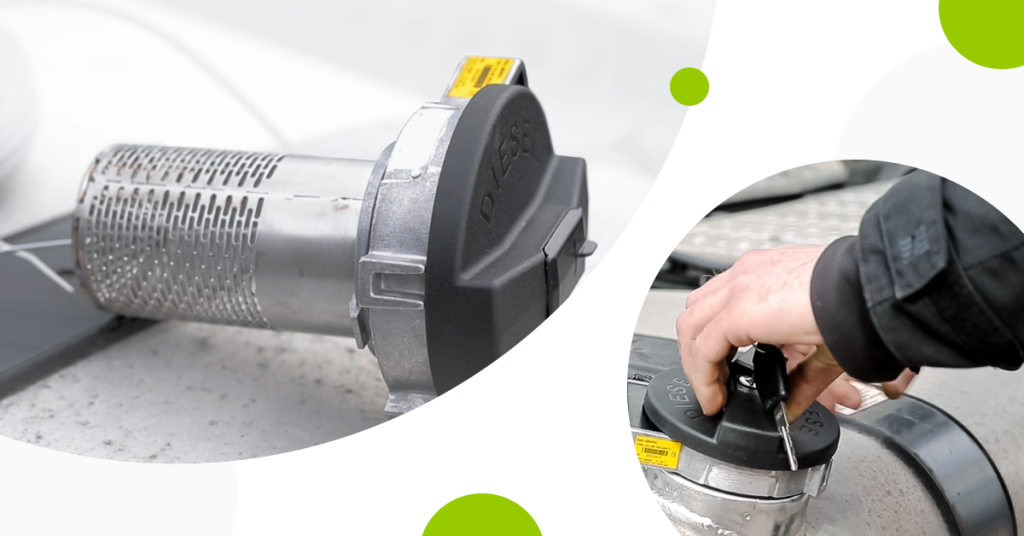The end of the year is a good time to take a pause and look at what’s been done and where we’re heading. We begin by reflecting, going over global events and how they influenced the telematics industry and specific market segments within. Once you have an idea of where you stand, it’s always interesting to take a peek into the future. Dust off the crystal ball that’s been tucked away for the whole year and see what we might expect in the new year. If you don’t like the idea of wishfully predicting telematics future trends, perhaps you’ll settle for an educated guess on what to focus on going forward. Let’s go!
2022 – the year of turmoil
When the COVID-19 pandemic hit in 2020, it seemed like the worst had happened. None of us imagined (and those who did, surely, hoped it wouldn’t) that the pandemic will be overshadowed by an ugly, unlawful and unnecessary war on Ukraine. This is especially true for those geographically closer to the war zone, bordering Ukraine and the aggressor countries Russia and Belarus.
We’re disgusted by the terroristic activities of Russia and the enormous loss for Ukraine, the full extent of which will only be revealed in the next few years. We hope for this war to come to a swift end and for Ukraine to regain its sovereign territory.
As our goal is to look back on events that influenced the fleet management, transport and, consequently, telematics industries, let’s see how the war has impacted them.
Spiking costs of energy
Although the costs of energy started to rise prior to the events of February 24, the war was a huge catalyst for price spikes for different types of energy, including the most essential to transport operations – oil and gas products. Because of this, companies started to pay much more attention to their fuel consumption and, thus, required technical solutions for saving energy and eliminating theft.
Our experience confirms this as we’ve also received increased client interest in Mapon‘s efficiency promoting fleet management software solutions, especially driver behaviour analysis and eco driving. Additionally, companies shifted their focus to prevent theft and sought to introduce fuel security solutions such as smart fuel caps, fuel tank opening alarms, fuel level drop alarms, etc.
It is quite interesting that the demand for fuel security products wasn’t localized to the usual, suspect territories, but also arose within developed markets such as Finland, where fuel theft is considered less common.
Driver shortages
While driver shortage is a fleet management trend that negatively affects nearly all markets around the globe, the European market took an additional hit this year. It’s no secret that there are a lot of drivers from Russia, Ukraine and Belarus working in Europe. Past experience shows that they usually start working in Eastern Europe, for example, the Baltic countries or Poland, and once they gain enough experience, move on to Western Europe.
Because of the war many drivers from Ukraine went back home to defend their country, while for Russian drivers work permits became an issue, as they were no longer supplied or extended. Due to this, in 2022 we’ve noticed several Mapon clients having to put their trucks to a standstill simply because there’s no one to drive them.
The local drivers, on the other hand, are reluctant to pull the extra weight on a low wage. From this point of view, it’s less of a shortage and more of a demand to raise wages, as most are not willing to commit to long periods away from home for a comparatively small salary. Instead, they choose other jobs with more favourable conditions.
However, now that the latest European Mobility Package rules on driver posting have come into effect, aimed specifically to improve their working conditions, there could be more pressure on employers to raise driver wages. This could rekindle interest towards working in the field.
Import and export bans on Russia
The EU has introduced several packages of sanctions against Russia over the course of the year and this has also reduced the amount of cargo to be transported between EU and Russia. It has had a significant impact on the transporting companies, as they’ve had to re-route their vehicles to other directions/markets, which has mostly been to the western part of Europe.
The same applies to transport operations to and from Ukraine – due to the active war, the risks of carrying out transport operations are significant, therefore making companies avoid it. On the positive side, we’ve yet to see any major cases of transport company bankruptcies, making one believe that businesses have adapted to the situation. The two most apparent solutions being re-routing or transferring some assets to, for example, a branch established within Europe. The latter would be the best way to comply with the requirements of yet another Mobility Package rule requiring vehicles to return to their home country or company base.
Component suppliers impacted by the war
Whenever companies rely on global supply chains, things can go wrong in case of events of this magnitude. We have seen cases of new vehicle delivery delays, because of Ukraine manufactured component shortages. Mapon relies on fuel sensors manufactured in Ukraine and just after the war started there was a significant uncertainty about whether the supplier would be able to continue its operations. Luckily, the situation with manufacturing and delivery was solved after a few weeks and has been back to normal since.
On the bright side – we haven’t been using products from Russia in our portfolio and, thus, haven’t been impacted by sanctions imposed on Russia.
Significant events to track going forward
The only thing we can be certain of right now is that we can’t be certain about anything. The war is still ongoing, new sanctions are still being enforced, inflation is still hovering over us and central banks continue raising interest rates. Predicting the state of business for the next year is nearly impossible, but knowing where to look and what to look for is half the battle. Here are a few aspects you’d do well to keep track of.
Cost of energy
Although the price of oil has been declining for the past few months, we have also seen OPEC cutting production volumes, SPR releases being stopped and announcements of refilling them. These events might lead to the next cycle of energy price increases in 2023, but we strongly believe that 2022 has taught us that there is a way to manage it without going down the deep end – drivers can be taught to drive more efficiently and fuel theft is preventable.
You may be happy to hear that the European Commission is also taking a hands-on approach to help limit excessive gas price spikes.
Regardless of the cost of energy, we will undoubtedly see an increasing interest in saving energy, and in all likelihood a continuous interest in various fuel security and fuel economy-based products such as smart fuel caps, high precision fuel sensors and eco driving solutions.
Cost of capital
In the span of a year the European Central Bank has increased its interest rates, and so has the US Federal Reserve, and many other global banks have followed suit. What’s worse – there are currently no signals that the rates might go down any time soon.
Although it might not seem directly related to the telematics industry, in reality it can affect quite a lot. The cost of capital might stop new investment projects or worse – some businesses might not be profitable under the new interest rates at all.
For instance, if a product, i.e. cargo, provider goes out of business due to raised interest rates, there’s less to ship. Less cargo means less work for transportation companies. Because a high cost of capital results in high costs for running or replacing a fleet of vehicles, there might be fewer vehicles to equip with tracking devices, as companies will hold off on buying new vehicles and run the older ones for a longer time. On the other hand, a business in this situation will, presumably, strive to be more effective and the fleet telematics market offers a wide variety of solutions that are the key in doing just that.
So no matter how you look at it – everything’s connected and the deeper you go, the more potential risks you can identify.
Possible recession
As briefly touched upon in the previous two points, there are certain businesses, which cannot operate in the current economic environment and, thus, are forced to stop their business processes temporarily or go bankrupt altogether. This, in turn, reduces the amount of cargo to be moved, resulting in significant losses for transportation companies. It is increasingly harder to find cargo to move, and our clients have jokingly assured us of this several times now. Consequently, this trend might take off in 2023 due to general macroeconomic reasons.
Improved delivery timelines and reduced shortages
Although it seems that we’re painting a grim picture for 2023, there are certain promising aspects to the upcoming year as well. One such example is that a lot of businesses are putting their investment projects on hold, meaning that delivery timelines for certain goods are dramatically improving.
For instance, when discussing the availability of new vehicles from dealerships, we have seen cases where clients are cancelling their pre-orders, making new vehicles available for purchase with near-instant delivery timelines for others. The same applies to electronics manufacturing. As supply chains are getting back to their usual flow, we have seen hardware manufacturers improving their backlog of production. For companies like Mapon this allows reducing the stock of hardware devices which we built up over the course of the past couple of years.
Connectivity issues in Russia
If you recall our predictions for this year, the shift in communication networks is well underway in Europe. Some countries have already switched off their 2G service, others even 3G, and the general consensus is that 4G is the right technology to focus on. While that hasn’t changed, the sanctions imposed on Russia, i.e. the prohibition to export communication equipment, including GSM modules, have swayed things.
The manufacturers have taken this very seriously and some are even updating their firmware on GSM modules in order not to connect to mobile operators in Russia at all. The same can be said of GPS modules, which won’t fix a position in Russia due to a firmware update. For the transport companies this might impose risks of losing connectivity when travelling through Russia. If GPS positions are not fixed, it can even mean losing basic tracking data for long periods of time when in Russia.
In addition, the Baltic News Network writes that Ericsson and Nokia, which together serve nearly 50% of Russia’s base stations, are exiting the market by the end of the year. Since they make everything from antennas to equipment that connects optical cables, including software that allows different parts of a telecommunications network to function together, Russia is getting closer to the dark ages of connectivity.
While Russia’s invasion of Ukraine has been the central event of the year, wreaking havoc in more ways than one, there are other non-war-related aspects that we should keep in mind.
Satellite communication gaining traction
Satellite communication has been a technology used for remote areas, where installing cell towers does not make any business sense. Now with the technological advancements we have seen recently, for example, with Starlink, Gatehouse SatCom modules and the European Union implementing a strategy of launching their own satellite communication network, this could soon also impact fleet management and asset tracking industries. Obviously, it will take years to see decent developments in our somewhat conservative industry, but if you’re in the field, it makes sense to keep an eye on the development stages regarding this.
Welcoming second-generation smart digital tachographs
For European companies operating in the international transport segment, the next year might come with some new challenges as all new vehicles from August 21, 2023 will be equipped with second-generation smart digital tachographs. If you recall the introduction of the first-generation of smart digital tachographs, there were a lot of technical challenges. We’ll definitely follow this event and make sure our fleet management software and hardware is fully compliant with the new tachographs and you should, too.
The rise of video telematics
Mapon has been developing camera solutions throughout 2022 and during this period we’ve noticed a developing interest from our clients in the segment.
Our personal experience also speaks to the cause. Mapon vehicles were initially equipped with video telematics only on an exceptional basis, for testing purposes. In the past year our team was involved in two incidents. In the first, one of our vehicles was involved in an accident with a pedestrian crossing at a red light.
Because of the available video footage, we managed to solve the issue within days. The second incident included a truck and no cameras in the vehicle. It took 6 weeks to resolve the incident.
Our partners have also shared their experience from around the world, including cases of drivers nearly falling asleep at the wheel. All of this leads us to believe that camera solutions in the fleet telematics market are here to stay.
And there you have it – our predictions for 2023. Perhaps a bit gloomy, but there’s definitely a silver lining there as well. We hope it was a good read and gave you an insight into the transport and fleet management software industry in Europe. May next year bring peace and stability. If you’re looking for a partner in the industry, we have a lot more knowledge to share about the technology and business aspects, so feel free to contact us at [email protected].





